
Arquivo para August, 2017
What the tragedy of Oedipus the King teaches
There is in this tragedy a clear conflict between free will and fate, and it questions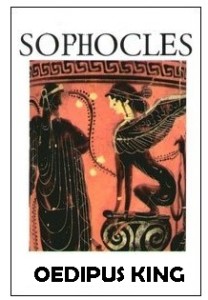 the extent to which we own our destiny, if we consider that there is a force beyond our simple human will, we will live in a humbler way and accept the fate of our lives.
the extent to which we own our destiny, if we consider that there is a force beyond our simple human will, we will live in a humbler way and accept the fate of our lives.
The tragedy tells the story of Oedipus, son of Laius and Jocasta, was the king of Thebes, the city that had been plagued by a plague. In consulting the oracle at Delphi, Oedipus discovered something tragic about his life: the gods cursed him. He was destined to marry his mother, with whom he had two sons and two daughters, and to kill his father, the king who ruled the city before Oedipus.
His father Laius knew of the curse and when I had his son abandoned tied to a tree between Thebes and Corinth and being found by a shepherd was created by him, adult Oedipus decides to return to Thebes and kills his father in Corinth marries his mother Jocasta, not knowing who she was, and later on learning that it was her mother she kills herself and Oedipus pierces her own eyes.
Wandering around the city is the Sphinx, mythological being half woman and half lion that terrorized Thebes with its enigmas, the Sphinx proposes the anima: “Which animal is that in the morning has four feet, two at noon and three in the afternoon?”
Oedipus responds that this figure is man, because the man in childhood crawls, in adulthood walks erect with both feet, and in old age needs the cane (the third foot) to lean, but deep down the Sphinx proposes the enigma about who is the man and what is his life.
The story steeped in symbolism, even influenced psychoanalysis that calls the dramas of childhood “Oedipus complex,” marriage with the mother also means the relationship we even put into adulthood with the female figure still today in a macho society.
Also Oedipus’s relationship with the wise Tiresias is particularly interesting, he had no physical vision, but he had wisdom, while Oedipus who had physical vision lacks an inner vision, when this vision begins when he ventures with Jocasta: “With this narrative Brings me doubt to the spirit, woman. How it disturbs my soul, “but the queen is also ambiguous in saying that she delivered the baby to a shepherd of her confidence, which showed her disbelief with the oracles, taking an authoritative stance.
It is not by chance that Aristotle considered the work Oedipus King as a symbol of Greek tragedy
The tragedy and the destiny
The incomprehension of pain and tragedy in our day causes us to create even greater chasms and pains, we are not able to embrace our own pain and the pain of others, but there is hope.
even greater chasms and pains, we are not able to embrace our own pain and the pain of others, but there is hope.
The tragedy was derived from the poetics and also from the religious tradition of Ancient Greece, having roots in the so-called dithyrambos, songs and dances performed in homage and honor to the Greek god Dionysus, whom the Greeks called the god Bacchus.
Some affirmed that the songs were created by the satyrs, who were beings that surrounded Dionysius in his fasts, that is what gave rise to the name, from the Greek words τράγος and ᾠδή, which respectively mean goat and song, originated in the word tragosoiodé, songs of goats , Hence the term drank like a goat, but the important here is the question of tragedy as pain and disenchantment, thus the derivative of in-song.
But the change, criticized by Nietzsche, was made by Euripides who lived from 480 BC to 406 BC, who opposed Sophocles for being too realistic and too pessimistic, but the world of the gods, already in Sophocles, was absent and Incomprehensible, but with Euripides became something even more distant, from where comes the modern expression “human too human.”
Thus the society of disenchantment, we like not the tragedy of life, but the tragic realism of violence, bad done and the world in disenchantment.
This is what tyrants, extremists and insiders drink, so we see a growing wave of racism, intolerance and bad politics, only tyrants can take advantage of this environment, see Charlotesville tragedy.
The holograms arrived
Although they are recent and there is still a lot of technology to become “augmented”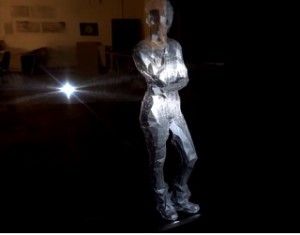 realities in our daily lives, the holograms have come down the path that is the fastest to anticipate, the art world.
realities in our daily lives, the holograms have come down the path that is the fastest to anticipate, the art world.
In many recent environments headseats are needed to merge the hologram with the real world, and create what has become known as augmented reality, others use 2D projections or mirrors to trick our brains and see the figures in mid-air, but now the Leap into the future was audacious.
According to artist Joanie Lemercier, he imagined the technique thought in the films Minority Report and the saga Star Wars, to give life to the “no-attainment”, the vision that has of the augmented reality, and to make the visitors of his “installations” enjoy The content in its own perspective without depending on specific equipment, and for the time being, are geometric projections and forms produced in sensing (for example, a human body or an artistic piece), geometric shapes and dynamic movements to entertain the public.
But it uses “traditional” monitoring technologies such as image analysis and depth sensors to make shapes properly designed.
While the industry scenario continues to be sophisticated, this simpler scenario seems to be more effective as it resorts to existing technologies, and by creating virtually human forms (see one of Lemercier’s projections), it seems more effective.
The artist himself predicts that in the very near future, he thinks of using compressed gas and mists with fine particles of water to display projections in an environmentally harmless environment, and that they will be simulating volumetric impressions in immersive environments
Amazon now sell tickets
Amazon again shakes up world markets, now tickets, offers appear both  on the American site and in United Kingdom, traditional ticket sellers are threatened, such as Ticket Master who saw their shares plummet on the American stock market.
on the American site and in United Kingdom, traditional ticket sellers are threatened, such as Ticket Master who saw their shares plummet on the American stock market.
It will take time to get to Brazil, but the future awaits us, what happens is that a series of events and local sales promotion, which means jobs and some money circulating in the places of the events, can be subtracted and generate more monopoly for the A site that initially sold only digital books, is now making headway in other markets.
But traditional event ticket sellers are guilty, the abusive fees they charge for sales can reach 10% at large events and events that quickly deplete tickets, without the assurance that these tickets may fall into the hands of money-changers.
One of the controls that can be observed on Amazon is the limitation of the number of tickets per payers, as they are usually registered in the site this control can be effective, of course unless they use a large number of oranges, but all must be “registered” “.
At the English site for example, you can see the ATP 1000 Nitto Tennis Finals (photo), from November 2 to 18, as well as the GlobeTrotters show, the June 2018 event, the Glastonbury Festival in New Castle, Cardiff, Manchester and Glasgow called El Sheeran which involves music, performances and theater, and many others.
The market will shake, in the stock markets already stirred falling stocks of companies that sell tickets.
Trust, faith and autonomy
As Giddens has established, there is a boundary between faith and trust, but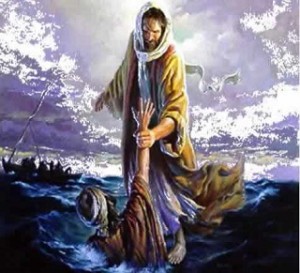 inevitably those who have confidence will need some kind of faith to increase their security and thus their autonomy, without it drifting towards individualism or isolationism.
inevitably those who have confidence will need some kind of faith to increase their security and thus their autonomy, without it drifting towards individualism or isolationism.
It is then possible to qualify the faith, let us turn to the mystics, and as Western-Christian civilization the figure of Jesus, the passage in which he walks on the waters scaring his disciples who think he is a ghost, is very illustrative and can tell us something of faith , so there is Matthew 28 to 30:
Then Peter said to him, “Lord, if it be you, let me go to meet you, walking on water.”
And Jesus answered, “Come!” Peter got out of the boat and began to walk on the water toward Jesus.
But when he felt the wind, he was afraid and, beginning to sink, cried out, “Lord, save me!”
Even one of his main disciples after finding him to be a ghost, recognizes him and wishes to walk on the waters sinks, lacked confidence, faith and mainly autonomy.
The fact that followers of various mystical currents have little autonomy makes them a little childish, and dependent on almost everything of the master, that is why the master often dies, the disciples die, but Jesus did not die … it is another story, And it will take another kind of faith, though many proclaim the living God, present him dead.
An important qualifier for faith and his twin sister hope, and both are daughters of love, then faith must originate from something that is love, must distribute the trust and the desired good with other people and the environment, to Makes it “trustworthy” then this kind of faith is not blind, but a faith that has an “agapic act” that heals the environment.
The fact that the vast majority of religious groups function as closed systems and do not provide the environment with a sensible improvement, first in relationships and then in actions, and finally in faith; Is that it makes them a minefield of prejudices and evil, they want to be heard as masters, but they are small in listening and opening.
Walking on the water, the metaphor most often used is to say that it is a world that is agitated and agitated by injustice and lack of love, should not oppose an active and deep inner faith.
Trust those who have faith, but faith must come from a soul open to the world and to others.
Expert systems, trust and faith
The whole theory of Giddens, reviewed in some aspects in the previous posts, is conditioned to the structuring and what he calls expert systems, but these in turn are based on what he calls trust also already explained in the posts, highlighting the question of faith .
conditioned to the structuring and what he calls expert systems, but these in turn are based on what he calls trust also already explained in the posts, highlighting the question of faith .
Expert systems, as seen by Giddens, are the most important undocking mechanism, described as “systems of technical excellence or professional competence that organize large areas of the material and social environments in which we live today.” Although most lay people consult, only periodically, professionals but all of them under great suspicion, for this reason so many new theories and so many “alternative systems”.
Although the author admits that faith: “Trust is inevitably partly an article of faith” (Giddens, 1991, page 39), but adds: “There is a pragmatic element in faith, based on the experience that these systems [experts] usually work as they are expected to do “(idem).
Finally, he admits that although faith and trust “are closely linked” makes a distinction between the two, and the distinction Luhmann makes in his work on Trust and Power (Chichester: Wiley, 1979) is based. very vague.
It is important to say that this faith is not the exclusive property of Western cosmo-gonies (not cosmologies), in fact all religions, even non-Western religions, will have some form of faith, which it is necessary to distinguish from belief as belief in one God (monotheistic religions) or in many (Polytheists), where not only humans but also animals, plants, rocks, natural characteristics have “soul” without differentiating them from the physical world.
Faith is an adherence to some hypothesis that the person accepts without any rational proof and this is in the etymological origin of the Latin fide, reason here does not have the modern meaning, but the one of reasoning done in the mind, so it would not be blind, but only Before any reasoning, a modern epoché, that is, it has a form of reason that is to accept things beyond our preconceptions.
It means ultimately a step forward not in the dark, but in the mystery and even more importane than this is to find it forward, it means to move beyond the boundary of the “system.”
Most people take this step by meeting (apparently) an abyss, an emptiness, but they could do it consciously (so it is not totally blind) if you believed in what lies ahead, like you do and have faith that everything the RCA Rockefeller Center, taken on Sept. 20, 1932 and published in the New Herald Tribune on October 2 of that year, is like the classic photo of workers on a suspended beam in what would be today.
Postmodernity, a return to the beginning and the current
The author (Anthony Giddens) we are reading, does exactly in the chapter of “trust” na approach to nihilism by criticizing Nietszche and Heidegger, with which we disagree, but it does not fail to emphasize the importance of both,
approach to nihilism by criticizing Nietszche and Heidegger, with which we disagree, but it does not fail to emphasize the importance of both,
The first to have broken with the Enlightenment, and the second (although he does not say directly) that the “new perspective” (which of the Enlightenment ??) surpassed the “tradition of dogma” the author says that “postmodernism has been associated not only with the end of acceptance of foundations as the ‘end of history'” (p. 60) which is true, but a brief distinction must be made between post-Modernity and postmodernism, the first is the phenomenon that since Nietszche is pointing, but developed with Husserl, Heidegger and Gadamer, the second is the idea that the phenomenon itself is already a new stage of humanity.
It calls for the exercise of trying to approximate the issue of consciousness history (name I consider more correct for historicity, see Truth and Method of Gadamer) of “futurology” and will call “undoing” this idea that after mapping the past can be
Presupposes “a future orientation of this kind” (p.61), then it resumes the “elucidation of modern thought”, but it does not fail to make conventional discourse; “This process as a process of globalization, a term that must have a key position in the lexicon of the social sciences” (p.62), which is still a discourse that “disengages” with tradition, to use
The author’s own argument, one must revise the Enlightenment without appealing to it.
The discourse and here we find contradictions in its model of trust, the “reflective appropriation of knowledge” that tries to deny the progress of the Enlightenment period by saying: “displaced social life from the fixity of tradition,” which he calls “symbolic fixes and systems Dangers “that in fact involve trust is placed in a systemic model because it sees it as distinct from the model of” belief based on weak inductive knowledge “, it is also a belief, the problem is precisely putting it in dialogue with tradition to emerge the new.
It sees knowledge with a “differential power” with some individuals or groups more apt to acquire them, but the process of globalization of knowledge is not the inverse?
Do we agree with the power of values and the impact of unintended consequences, according to their concept that “to social life transcends the intentions of those who apply it for transformative purposes,” is not this the question of historical consciousness?
Its double hermeneutics, which sees it as “the circulation of social knowledge” that must be applied “reflexively” would alter the original circumstances, is pure romanticism.
It will allude to its key category, which is globalization, with some different approaches from other authors, but within the closed view of those who follow the system model, it does not coincidentally begin with considerations about McLuhann.
Without considering the paradox of the neo-positivist Kurt Gödel, who asserted that the system already has its internal contradictions and can only be proved as true by an external assertion, in the case of postmodernity that is already external, we must dialogue with the tradition for That its key concepts: liberalism, capitalism, state, logic, legality, among many others, are made not only in a double hermeneutic but in an open hermeneutics where the preconceptions of any “closed” hermeneutics can be overcome.
Confidence what is it?
As we have said the theme of trust is a recurring theme in postmodernity, but what does it really mean, because exactly this theme has entered this time of change?
does it really mean, because exactly this theme has entered this time of change?
The responses of Giddens (1991) are very relevant and bring good reflections, from the page to page 65 that we read in two steps, first 9 questions of confidence:
1 – It is related to an absence in time and space, although some authors give preference to time (Being and time, for example) and others to space (movements occupy themselves and the thoughts of “engagement”). Clarifies: There would be no need to trust anyone if their attitudes and thought processes were visible.
2 – Confidence is “basically linked” to contingency and not risk as can be assumed, that is, credibility must be given to contingent results, whether in relation to the action of individuals or systems.
3 – Confidence is different from faith in a person or system, it is that which derives from this faith, so has little faith that little trust, it is the link between faith and belief, according to Giddens, is this that distinguishes it from “inductive knowledge Weak, “for in a sense it must be” blind. ”
4 – The author speaks in confidence in symbolic tokens or expert systems, but of course, this isn´t based on faith, it may be of a certain faith in systems, but “it refers rather to proper functioning than to its operation as such,” Here many are deceived.
6 – In modernity, trust exists in contexts: a) general awareness of human activity, b) broadly expanded transformative scope of human action, by modern institutions, but the concept of risk replaces that of fortune, but does not mean that the pre -moderns had no notion of risk or danger, only that natural causes and chance replaced religious cosmologies, read for example “Chance and Chaos” by D. Ruelle.
7 – Risk and danger are closely linked, but they are not the same, risk presupposes danger, but danger is an ill-calculated and inconsequential risk.
8 – Risk and trust are intertwined, trust serves to reduce or minimize hazards.
9 – Risk is not an individual issue, there are “risk environments” and the tradition or the term that I prefer to use “the original culture” is a way of integrating and monitoring the space-time action of a community.
I did not skip the fifth one, it was just to emphasize it is possible as the author says, at this point “a definition” that is the “credibility belief” of a certain person or system, in view of “results and events together” , Of course this is wrapped in “love” or “principles.”
Here we understand why it is postmodern, for this must presuppose values and we will return to this.
GIDDENS, Anthony. The consequences of Modernity. Stanford: Univ. Stanford Press, 1990.
Post-modernity and Confidence
The book of Anthony Giddens which refers to the consequences Modernity 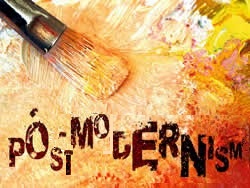 analyzes that the “style, custom of life or social organization that emerged in Europe from the seventeenth century and which subsequently became more or less world-wide in its in fl uence” (Giddens 1991, P. 17-20) discusses the (in) existence of a “post-modernity” that is not of the least importance, since it is only a terminological question, since we know that modernity has passed, and that today it is not enough to invent new ones Terms of understanding social phenomena, but to say what in fact is the very nature of Modernity.
analyzes that the “style, custom of life or social organization that emerged in Europe from the seventeenth century and which subsequently became more or less world-wide in its in fl uence” (Giddens 1991, P. 17-20) discusses the (in) existence of a “post-modernity” that is not of the least importance, since it is only a terminological question, since we know that modernity has passed, and that today it is not enough to invent new ones Terms of understanding social phenomena, but to say what in fact is the very nature of Modernity.
Among the various topics covered there is a recurring theme in my reading, which is the rhythm of the change of the era of Modernity and the scope of change, since some of the social transformations already penetrate virtually the whole world and with this the intrinsic nature of the great institutions Modern, without any correspondence in previous historical periods, already happen, for example, “the political system of the nation-state, wholesale dependence on the production of inanimate energy sources, or complete transformation into commodities and wage labor,” a Ideals such as Hegel intended that these institutions be “eternal.”
A second relevant is the relation to knowledge, for him “sociological knowledge spirals inside and outside the universe of social life, reconstituting both this universe and itself as an integral part of this process” (Giddens, 1991, 24). ) As modern scientism wants, but it also seems to be in check.
The third and particularly important theme is the subject of confidence, which has already been dealt with by authors such as Niklas Luhmann and Talcot Parsons, Giddens says, citing the definition of trust conveyed by the Oxford English Dictionary, which would be understood as “belief or credit in some quality or attribute Of a person or thing, or the truth of an affirmation “(GIDDENS, 1991: 38).
Giddens warns of the shift from this theme to that of systems, as in Luhmann’s case, where:
“One of the meanings of this, in a situation in which many aspects of Modernity have become globalized, is that no one can choose to leave completely out of the abstract systems involved in modern institutions. This is most obviously the case for phenomena such as the risk of nuclear war or ecological catastrophe. “(GIDDENS, 1991, p. 88).
Both the belief idea and the credit idea for the author are in some way linked to the idea of faith.
Giddens himself clarifies that Luhmann distinguishes faith and trust, emphasizing that this must be understood especially in relation to risk, a term originating from the modern age.
Without concluding what is meant by still trust, postmodernity refers, in Giddens’s view to the process in which: “all preexisting foundations of epistemology are revealed without credibility; that history is devoid of teleology and consequently no version of progress can be plausibly defended; And that a new social and political agenda has arisen … “(GIDDENS, 1991, p. 36).
GIDDENS, A. The Consequences of modernity. Stanford; Stanford University Press, 1990. (pages is numer of brazilian edition).
The emptiness and transfiguration: spiritual or existential
The transcendence of Kant and all idealism is nothing but the existential 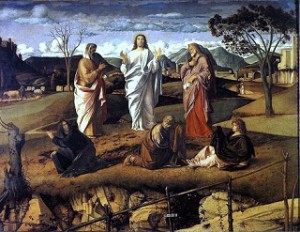 negation of the object, or we would say in Husserl’s reasoning the object-in-the-world, his worldhood, but what happens in this variation between my perception and the world?
negation of the object, or we would say in Husserl’s reasoning the object-in-the-world, his worldhood, but what happens in this variation between my perception and the world?
According to Husserl, the objects of the world come from various perspectives (Abschattungen), so a chair before me can be apprehended under various variations of profile (Abschattung).
In order to apprehend according to epoché, the object must be subjected to the various possible variations of profile in order to grasp the essence of that same object, that is, what remains unchanged in it, and this is its phenomenological reduction (epoché) or a debug of the phenomenon in order to reach the object with total evidence, the essence of the phenomenon, that is, its eidos (whence the modern idea came), but this variation is objective and subjective at the same time, this is called the ” .
We then come to epoché, to make a complete emptiness using the transcendental reduction, where we plunge into a state that may seem a loss of consciousness of the real world, but instead of making the phenomenon more problematic, by re-presenting the phenomenon transcendentally, It is more conscious, more evident. In the biblical passage of the transfiguration, where Jesus appears “transfigurated”, the apostles wanted to stay there because of the “eidetic” world.
Next we present the beautiful picture of Giovanni Bellini that represents the figure, we see the Trinity having Jesus in the center and two more figures Because the idealistic reason is incapable of becoming truly eidetic, that is, seeing the same person in three profiles, and more serious, one human, one extremely divine and happy the third is neither a dove nor a fire But another human figure, the Renaissance Bellini was not yet an idealist (see a peasant in his normal life), but there was still the dualism of heaven and earth, the apostles wanted to remain there.
But Jesus wants to descend from Mount Tabor and Back to earth: The gospel of Matthew says that Peter thought they were three biblical people, saying, “Peter answered and said, Lord, it is good for us to be here. If you wish, I will make three tents here: one for you, one for Moses, and one for Elijah. Peter was still speaking, when a luminous cloud covered them with his shadow … came a voice saying: This is my beloved son … “, human and transcendent, needed councils to establish the divine and human nature of Jesus.
The Trinity is still ‘hidden’ for those who only deify or humanize subjects and objects, then the ‘relational world’ remains complicated, this is the cultural and spiritual crisis of the modern world, ner subjects neither objects, this is existential nihil.

